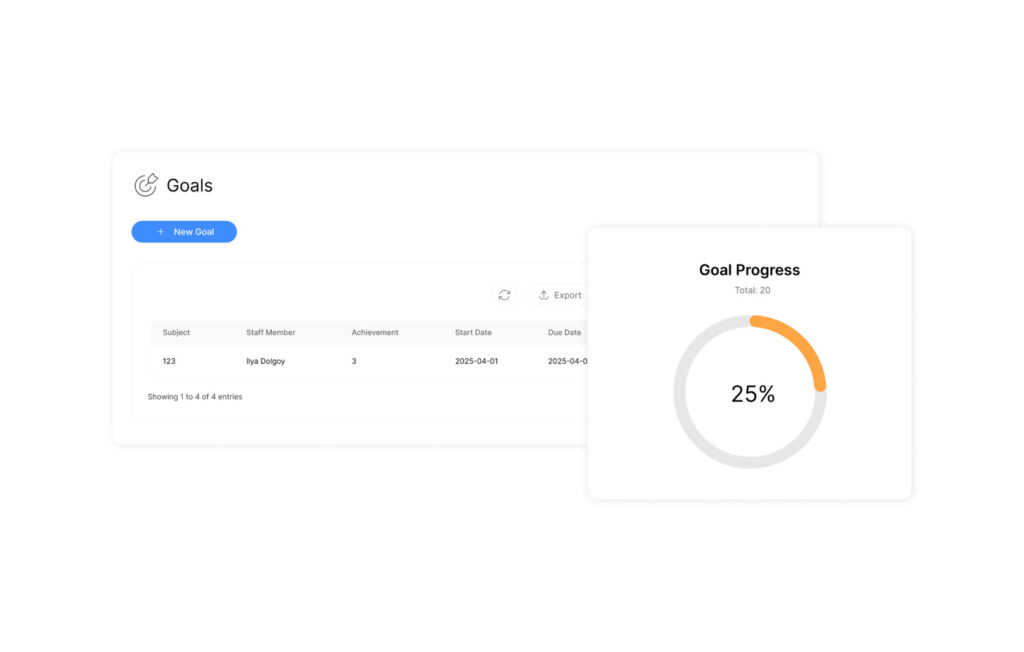Managing complex website initiatives demands more than creativity—it requires a battle-tested framework. Structured planning tools transform chaotic development cycles into efficient workflows, ensuring teams deliver results that align with client expectations and business goals.
Professional agencies rely on strategic roadmaps to define project boundaries and timelines. These systems break work into seven phases: discovery, content planning, prototyping, technical execution, testing, launch, and ongoing optimization. By standardizing these stages, teams minimize scope creep while maintaining profitability.
Clear documentation acts as the backbone of successful collaborations. Detailed requirements and stakeholder roles get confirmed before any creative work begins. This proactive approach prevents miscommunication and reduces costly revisions later in the process.
Cross-functional teams benefit most from unified planning frameworks. Designers, developers, and content specialists coordinate tasks seamlessly when using shared timelines. Modern systems integrate with platforms like Asana or Trello, enabling real-time progress tracking and automated client updates.
Organizations that prioritize upfront planning consistently outperform competitors. They achieve faster turnaround times, higher satisfaction rates, and stronger client relationships through predictable, repeatable processes.
Key Takeaways
- Structured frameworks turn unpredictable workflows into measurable, phase-driven processes
- Clear documentation reduces revision cycles by 40-60% according to industry benchmarks
- Cross-department alignment ensures efficient resource allocation across creative and technical teams
- Integrated tool ecosystems enable automatic progress reporting and milestone tracking
- Standardized launch checklists minimize post-release errors and maintenance costs
Understanding the Essentials of a Web Design Project Template
Effective digital initiatives thrive when teams adopt systematic planning methods from day one. A well-crafted framework transforms ambiguity into actionable steps, aligning creative vision with operational realities. This approach balances stakeholder expectations with practical execution timelines.
Key Benefits of a Structured Approach
Organizations using systematic frameworks resolve conflicts 58% faster than those relying on ad-hoc methods. Teams complete milestones 30% quicker by eliminating redundant discussions about responsibilities. Clear timelines reduce last-minute scrambles, ensuring smoother handoffs between specialists.
| Traditional Approach | Template-Driven Method |
|---|---|
| Unclear task ownership | Defined roles in initial phase |
| Reactive communication | Scheduled progress reviews |
| Variable quality checks | Predefined QA benchmarks |
| Budget overruns (avg. 22%) | Cost variance under 7% |
Core Components to Consider
Successful frameworks include three non-negotiable elements. First, scope documentation locks deliverables before work begins. Second, communication protocols establish update frequencies and decision-makers. Third, dependency maps highlight critical path items affecting launch dates.
Teams using these components report 40% fewer client disputes. Stakeholders appreciate seeing real-time progress dashboards instead of endless email threads. “Visibility into timelines builds trust faster than any proposal,” notes a UX lead at a Fortune 500 consultancy.
Defining Project Scope and Goals

Successful digital ventures begin with precise alignment between vision and execution parameters. This critical planning stage converts abstract ideas into actionable roadmaps, ensuring all contributors understand their roles in achieving measurable outcomes.
Initiating the Discovery Phase
Thorough stakeholder interviews form the backbone of effective planning. Teams uncover core business objectives, audience demographics, and market differentiators through structured dialogues. Competitive analysis identifies industry benchmarks while revealing opportunities to outperform rivals through tailored solutions.
User research methods like persona development map customer pain points to functional requirements. Journey mapping exposes friction areas in existing systems, guiding architectural decisions. “Assumptions crumble when data drives the process,” observes a UX strategist at a leading tech consultancy.
Setting Clear Objectives and Expectations
Quantifiable targets transform vague concepts into trackable metrics. Teams might prioritize 35% faster page loads or 20% higher form completions. Budget frameworks establish boundaries for features and integrations, preventing mid-cycle expansions.
Formal requirement documents serve as binding agreements between partners. These outline deliverables, quality standards, and approval workflows. Role clarity tools like RACI charts eliminate task ambiguity across departments, keeping initiatives on schedule.
Integrating Content Strategy and Architecture
Strategic content planning transforms digital experiences from chaotic to conversion-focused. When architecture aligns with user journeys, businesses see measurable improvements in engagement and search performance. This integration ensures every piece of content serves both visitor needs and organizational goals.
Developing a Cohesive Content Hierarchy
Content architecture begins with rigorous audits. Teams inventory existing materials, identifying gaps between current messaging and audience pain points. This analysis prioritizes high-impact pages that drive conversions rather than saturating sites with filler text.
Sitemaps act as blueprints for both users and search engines. Clear pathways guide visitors from awareness to action while helping crawlers index critical pages efficiently. Logical hierarchies reduce bounce rates by 27% in optimized sites, according to recent UX studies.
- Audience-first writing solves problems instead of pushing sales pitches
- Regular content reviews maintain accuracy and compliance post-launch
- Visual design integration reinforces messaging through consistent layouts
Maintenance frameworks prevent digital decay. Scheduled updates and performance tracking keep information relevant. For teams managing lead generation, tools like gated content forms automate prospect nurturing while maintaining quality standards.
“Hierarchy isn’t about control—it’s about creating clarity in communication,” notes a UX director at a top SaaS firm.
Successful strategies balance creativity with structure. They transform static pages into dynamic conversion engines that adapt to market shifts and user behavior patterns.
Establishing Design and Branding Guidelines

Cohesive visual identity separates memorable digital experiences from forgettable ones. Strategic guidelines align aesthetics with business objectives while maintaining technical feasibility. This phase transforms abstract concepts into actionable blueprints teams execute with precision.
Creating a Mood Board for Visual Direction
Mood boards convert brand values into visual language. Teams curate color palettes, typography samples, and imagery styles that reflect organizational personality. Stakeholders approve these references before detailed work begins—reducing subjective feedback by 43% in enterprise projects.
Effective boards balance creativity with practicality. A fintech brand might pair bold blues with clean interfaces to convey trust and innovation. Approved visual systems accelerate production timelines by giving designers clear guardrails for exploration.
Wireframing and Prototype Best Practices
Functional prototypes test ideas before coding begins. Teams map user flows using low-fidelity wireframes that prioritize usability over aesthetics. This approach identifies navigation issues early, saving 18-25 hours per project in rework costs.
High-fidelity mockups integrate brand elements into interactive layouts. Developers receive exact specifications for spacing, breakpoints, and animation triggers. Tools like conversion-optimized layout builders streamline handoffs between creative and technical teams.
“Prototypes are contracts—they show exactly how systems should behave under real conditions,” explains a product lead at a top SaaS company.
Consistency checklists ensure every element reinforces brand recognition. Teams document button styles, error states, and microinteractions to maintain uniformity across pages and devices.
Planning for Development, Testing, and QA
Modern digital solutions require meticulous coordination between technical disciplines. Teams achieve peak efficiency when workflows align early, balancing user-facing features with robust infrastructure. This phase turns creative concepts into functional systems through methodical execution.
Aligning Front-end and Back-end Workflows
Agile methodologies dominate modern workflows, breaking complex builds into two-week sprints. Front-end specialists focus on responsive layouts and interactive elements, while back-end engineers construct scalable databases and APIs. Daily standups synchronize these parallel efforts, ensuring components integrate flawlessly.
Continuous testing identifies conflicts before they escalate. Teams embed QA checks into every development cycle rather than waiting for final reviews. This proactive approach reduces rework costs by 38% according to recent DevOps reports.
- Sprint planning maps dependencies between interface components and server logic
- Automated tools validate code integrity during integration phases
- Performance benchmarks guide optimization for high-traffic scenarios
“Agile isn’t about speed—it’s about precision through iteration,” emphasizes a tech lead at a Silicon Valley software house.
Documentation preserves institutional knowledge post-launch. Maintenance teams reference technical specs to implement updates without disrupting live systems. Version control systems track changes across distributed teams, maintaining code integrity through multiple releases.
Implementing the Web Design Project Template for Success

Structured frameworks transform strategic plans into measurable outcomes through disciplined execution. Teams achieve predictable results by embedding quality checks and communication protocols directly into their workflows. This operational rigor turns ambitious visions into launched solutions that meet deadlines and stakeholder expectations.
Step-by-Step Setup for Maximum Efficiency
Customization separates effective frameworks from rigid checklists. Teams adapt pre-built systems to match client priorities and technical requirements. Configuration includes assigning ownership, setting review cadences, and mapping dependencies between tasks.
| Traditional Setup | Optimized Framework |
|---|---|
| Generic task lists | Role-specific workflows |
| Manual progress tracking | Automated status updates |
| Post-launch QA | 56 checkpoints pre-release |
| Reactive client calls | Scheduled feedback sessions |
Maintaining Momentum Through Continuous Oversight
Real-time dashboards in tools like Asana track completion rates against milestones. Teams flag delays within 48 hours, allowing swift resource reallocation. Integrated approval workflows prevent bottlenecks by routing deliverables to stakeholders automatically.
Quality assurance becomes proactive through template-embedded test cases. One tech lead notes: “Our defect rate dropped 63% when testing became mandatory at each phase.” Client communication plans preserve focus—weekly summaries replace constant check-ins without sacrificing transparency.
Post-launch analysis drives improvement. Teams compare initial estimates with actual effort, refining future timelines. Success metrics like stakeholder satisfaction scores and deadline adherence rates highlight framework effectiveness while identifying optimization opportunities.
Managing Timeline, Budget, and Resources
Balancing financial constraints with operational demands separates thriving agencies from struggling ones. Structured frameworks convert vague aspirations into tactical plans, aligning team capabilities with stakeholder priorities. This approach transforms resource management from reactive firefighting to strategic foresight.
Allocating Time and Team Efforts
Detailed budgets establish guardrails for decision-making. Teams prioritize features based on client impact versus development complexity, eliminating wasteful spending. Automated tools calculate hourly rates against milestones, ensuring profitability stays on track.
Resource templates forecast staffing needs across phases. They identify when to deploy specialists versus generalists, preventing burnout during crunch periods. Shared schedules synchronize cross-functional work, reducing duplicate efforts by 31% in enterprise cases.
Regular progress reviews maintain momentum. Leaders adjust timelines before delays escalate, using real-time dashboards to redistribute tasks. One agency director notes: “Transparent communication prevents 80% of client disputes over deadlines.”
Final approval checklists lock deliverables before launch. Teams compare actual hours against estimates to refine future plans, creating self-improving systems that boost efficiency with each initiative.

